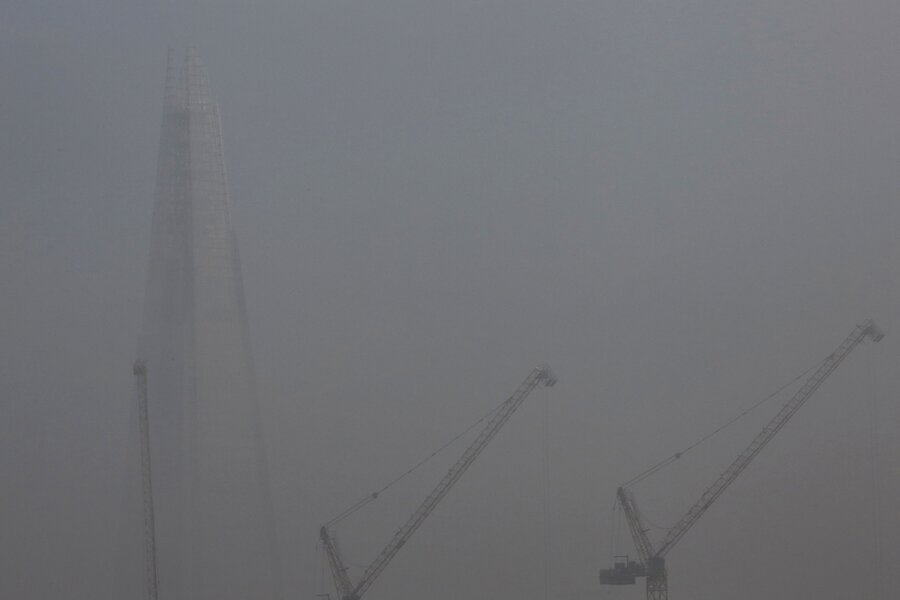At last, scientists say they have solved the 1952 London fog mystery
Loading...
In 1952, a thick, toxic fog settled over London, and at least 4,000 people died, with another 150,000 hospitalized. Scientists think they’ve finally pinpointed the reason.
An international team led by Renyi Zhang, an atmospheric science professor at Texas A&M University in College Station, Texas, has published a study in the Proceedings of the National Academy of Sciences that clarifies how sulfur dioxide released by coal burning – long known to be a main cause of the deadly fog – was converted into sulfuric acid.
The results had modern-day inspiration: They were obtained using lab experiments and atmospheric measurements from Beijing and Xi’an, according to Live Science. And Dr. Zhang says the study may prove useful to authorities in China – where conditions are similar to 1952 London – and other places where air pollution levels often pose a threat to residents’ health.
“Our results showed that this process was facilitated by nitrogen dioxide, another co-product of coal burning, and occurred initially on natural fog,” said Dr. Zhang in a statement. “Another key aspect in the conversion of sulfur dioxide to sulfate is that it produces acidic particles, which subsequently inhibits this process.”
When fog particles containing diluted acid evaporated, it left an acidic haze that covered the city, he added. That led to the worst air pollution-related catastrophe in European history, and the impetus for Britain’s passage of the Clean Air Act in 1956.
Air pollution remains a serious problem in much of the globe. In February, researchers from the American Association for the Advancement of Science said that more than 5.5 million people die from air pollution every year, including 1.6 million in China and 1.5 million in India, reported The Christian Science Monitor’s Story Hinckley.
That’s not necessarily to say that they’re at risk of living a repeat of what happened in London. China’s haze, notes the team, is made up of much smaller nanoparticles, and the sulfate-formation process studied is made possible only by ammonia.
Still, governments in both countries seem to understand how urgent the problem of air pollution is.
“A couple of great things are happening in China,” Dr. Michael Brauer, a professor at the University of British Columbia’s School of Population and Public Health in Vancouver, Canada, told the Monitor then. “They have started to do measurements [of air quality] so we can track progress, and there is at least a leveling off of pollution levels – and maybe even a decrease, but it is too early to say for sure.”
“It looks like China is on the right path,” he added. “The issue is how quickly can the levels come down?”
Dr. Zhang says that a reduction in nitrogen oxide and ammonia emissions would likely disrupt the sulfate-formation process examined in the team’s study.
“A better understanding of the air chemistry holds the key for development of effective regulatory actions in China,” he said in the statement.
“The government has pledged to do all it can to reduce emissions going forward, but it will take time. We think we have helped solve the 1952 London fog mystery and also have given China some ideas of how to improve its air quality.”








